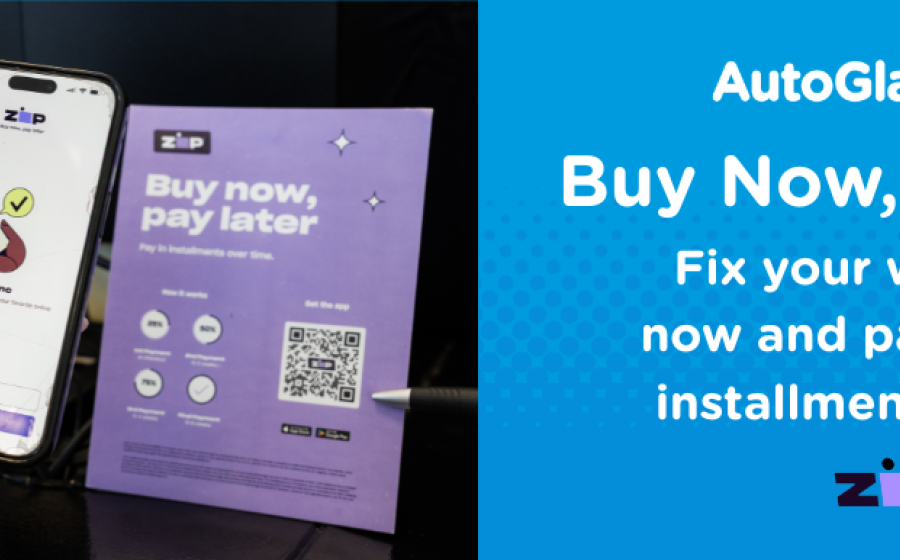(Madison Roberts, Contributor) - The Rise of Digital-First Healthcare
- The Rise of Digital-First Healthcare
The telehealth and direct-to-consumer (DTC) healthcare industries are undergoing a seismic transformation. The global online pharmacy market, valued at $69.25 billion in 2020, is projected to reach $210.35 billion by 2028. Similarly, the telehealth market, which stood at $144.38 billion in 2020, is expected to soar past $636 billion by 2028. These numbers underscore a massive shift in healthcare delivery, where convenience, technology, and personalization are becoming the norm.
At the forefront of this revolution is Bask Health, a telehealth infrastructure company that enables entrepreneurs to build and scale digital healthcare brands seamlessly. Whether you’re a doctor, pharmacist, or entrepreneur, Bask Health provides a fully integrated, white-label platform designed to remove the complexity from launching a telehealth business.
Unlike traditional healthcare platforms, which require businesses to piece together multiple systems—such as electronic medical records (EMRs), e-commerce tools, compliance frameworks, and pharmacy integrations—Bask Health provides an all-in-one, enterprise-grade solution that is powerful enough for large enterprises yet intuitive enough for small startups.
What is Bask Health?
Building a Fully Integrated Telehealth Business
Founded on the principles of flexibility, compliance, and ease of use, Bask Health is redefining telehealth. It offers a complete, no-code or API-driven platform for launching and operating DTC healthcare brands. Whether you're creating a weight-loss clinic, dermatology brand, or specialty pharmacy, Bask Health eliminates the need for custom development, expensive software engineers, or prolonged setup times.
Core Offerings
- White-Label Telehealth Engine – Build a branded telehealth business from patient intake to prescription fulfillment.
- End-to-End Compliance & Security – HIPAA, SOC-2, Surescript and LegitScript compliance ensure patient data is protected.
- Customizable Patient Workflows – No-code intake form builders, dynamic questionnaires, and asynchronous patient assessments.
- Built-In Pharmacy Fulfillment – Nationwide network of commercial and compounding pharmacies.
- E-commerce & Payments – Fully integrated checkout solutions for subscription and one-time purchases.
- Scalable API-First Infrastructure – Developers can build on top of Bask’s headless API architecture to create custom telehealth applications.
How Bask Health is Changing the Telehealth Industry
A ‘Shopify for Telehealth’ Approach
Traditional telehealth companies face a long and complex development process—finding an EMR provider, negotiating pharmacy deals, ensuring compliance, and building secure payment processing. Bask Health eliminates this friction by offering pre-built infrastructure that allows businesses to launch within days instead of months.
“We’ve built a platform that lets any telehealth entrepreneur launch a fully operational brand without having to reinvent the wheel,” says Bask Health’s CEO & Founder Zachary Dorf. “With built-in provider networks, automated prescription fulfillment, and seamless payments, we’ve taken care of the backend so businesses can focus on patient care.”
The Power of Automation & No-Code Tools
One of the standout features of Bask Health is its emphasis on automation and user-friendly design. Entrepreneurs without a development background can build patient intake forms, automate follow-up workflows, and manage prescriptions without writing a single line of code. This ease of use has made Bask Health the go-to platform for both first-time healthcare entrepreneurs and large-scale telehealth brands.
API-Driven Flexibility for Custom Solutions
For companies that require more advanced customization, Bask Health’s headless telehealth architecture enables developers to build bespoke telehealth solutions. The API-powered infrastructure allows seamless integration with third-party systems, payment processors, and analytics platforms.
Success Stories: How Businesses are Scaling with Bask Health
Case Study: From Concept to Nationwide Telehealth Launch
Phong Truong, PharmD, CEO & Founder of Ivy Rx had extensive experience in pharmacy but no background in software development. Yet, he was able to launch a nationwide telehealth platform in a matter of days using Bask Health’s no-code solutions.
“While my experience is in pharmacy, Bask’s doctor group and platform allowed for a seamless nationwide launch. I’m also not a developer, but with the no-code solutions, I was able to launch our telehealth business in just a matter of days. The platform’s ease of use and built-in tools helped me focus on growing our patient base while delivering top-tier healthcare remotely.” – Phong Truong, PharmD, CEO & Founder, Ivy Rx
Case Study: Driving Operational Efficiency for Established Healthcare Companies
Dr. Rebecca Emch, VP of Pharmacy Operations at Eden, credits Bask Health for streamlining internal operations and providing real-time business insights.
“Bask has been a cornerstone in our growth at Eden since we first started as a company. Their EHR solutions have not only streamlined our processes but also provided invaluable insights into our business that have helped shape our strategic decisions. They consistently deliver software upgrades that enhance functionality, keeping pace with industry needs. We truly appreciate how responsive they are to feedback, making improvements based on partner requests. Bask’s dedication to innovation and collaboration has been instrumental to our success, and we look forward to what the future holds.” – Dr. Rebecca Emch, VP of Pharmacy Operations, Eden
Case Study: Telehealth Startup Success
Paul DiMuzio, Founder of Locklab, highlights how Bask Health simplified his telehealth company’s launch:
“The Bask team really cares about their customers and is always willing to go the extra mile to ensure we’re taken care of. The ease of use and turnkey nature of the platform really helped us launch our business. We couldn’t recommend them more to anyone starting a telemedicine company. Choose Bask if you want to be supported by a company that cares about your success.” – Paul DiMuzio, Founder, Locklab
The Future of Telehealth: Why Bask Health is Poised for Growth
With over 100 telehealth companies powered by Bask, the platform is already a dominant force in digital healthcare. As consumer demand for digital-first healthcare solutions continues to rise, Bask Health is positioned to be the leading infrastructure provider for entrepreneurs, pharmacies, and established healthcare brands alike.
The company is continuously evolving, integrating AI-powered analytics, advanced automation tools, and new pharmacy partnerships to further optimize the telehealth experience.
“We envision a world where launching a telehealth business is as simple as starting an e-commerce store,” says the Bask Health President and Co-Founder Elias Dorf. “We’re not just a platform—we’re an ecosystem that supports businesses in delivering exceptional patient care.”
Join the Future of Telehealth
Bask Health is democratizing access to digital healthcare entrepreneurship. Whether you’re an independent provider, a startup founder, or an enterprise organization, Bask Health provides the tools, compliance, and infrastructure needed to succeed in telehealth.
Next Steps- Schedule a Demo – See how Bask Health can power your telehealth business.
- Talk to Experts – Learn how to integrate Bask’s platform into your existing operations.
- Start Your Digital Healthcare Journey Today!
 - Let’s face it, a cracked windshield or shattered window never comes at a good time. Between work, errands, and upcoming holiday travel, most people just want to get it fixed fast… without stretching their budget.
- Let’s face it, a cracked windshield or shattered window never comes at a good time. Between work, errands, and upcoming holiday travel, most people just want to get it fixed fast… without stretching their budget. Because life happens. And sometimes, so do cracked windshields!
Because life happens. And sometimes, so do cracked windshields!


 - America’s story has been written by those bold enough to begin. The revolutionaries who founded a new nation, the farmer who moved west to claim and seed land, the inventor who built a new machine, and the newcomer who opened a small shop on Main Street were all pioneers. Each had no guarantee of success. Each carried the promise of progress.
- America’s story has been written by those bold enough to begin. The revolutionaries who founded a new nation, the farmer who moved west to claim and seed land, the inventor who built a new machine, and the newcomer who opened a small shop on Main Street were all pioneers. Each had no guarantee of success. Each carried the promise of progress.
 - Running a small business in California can feel like death by a thousand policies. With
- Running a small business in California can feel like death by a thousand policies. With 
 - The Rise of Digital-First Healthcare
- The Rise of Digital-First Healthcare
 - Tax policy is set for a pivotal year and while most will focus on potential corporate tax rate changes, a new issue is emerging: the role of AI in tax preparation.
- Tax policy is set for a pivotal year and while most will focus on potential corporate tax rate changes, a new issue is emerging: the role of AI in tax preparation. -
- 
 - Choosing The Right Marketing Agency,
- Choosing The Right Marketing Agency,  - Message Delivery is Key for, standing out from the competition. You need to be unique in your message and branding let us create and deliver your message to 100 million Americans we guarantee success unlike any other brand what we are proposing that will change is the delivery and give you results the kind you will been looking for. Remember the brands you are competing with have access to media as well. What we want to do for you is save you time ,effort, energy and streamline your message with premium and proper research we can do just that. With proper information and how you want to tell your story we turn that into a beautiful story to stand out from the competition. Share your unique message that your brand will be at the top of minds of people and companies that want your services. Let's be different. How we deliver you message is unlike any other way based on access we have.
- Message Delivery is Key for, standing out from the competition. You need to be unique in your message and branding let us create and deliver your message to 100 million Americans we guarantee success unlike any other brand what we are proposing that will change is the delivery and give you results the kind you will been looking for. Remember the brands you are competing with have access to media as well. What we want to do for you is save you time ,effort, energy and streamline your message with premium and proper research we can do just that. With proper information and how you want to tell your story we turn that into a beautiful story to stand out from the competition. Share your unique message that your brand will be at the top of minds of people and companies that want your services. Let's be different. How we deliver you message is unlike any other way based on access we have. 
 - Lets talk brand Messaging, Lets talk brand Message. In today's world of Cooperative Reach in digital information and endless choices in agencies, LKPFM Corp directs campaigns making your brand and message stand out to the ideal customer at the right time with the right angle. In fact, brand messaging is built through creativity and strong data. This takes, Time, Effort and access to proper recourses. Our NEW Online Access Point to Print, Newspaper, and Digital provides is this just that.
- Lets talk brand Messaging, Lets talk brand Message. In today's world of Cooperative Reach in digital information and endless choices in agencies, LKPFM Corp directs campaigns making your brand and message stand out to the ideal customer at the right time with the right angle. In fact, brand messaging is built through creativity and strong data. This takes, Time, Effort and access to proper recourses. Our NEW Online Access Point to Print, Newspaper, and Digital provides is this just that.
 - Youth Apprenticeship Week, an initiative of the U.S. Department of Labor, features a range of events and speakers at venues across the United States to showcase the many benefits of Registered Apprenticeship programs for youth and young adults ages 16-24.
- Youth Apprenticeship Week, an initiative of the U.S. Department of Labor, features a range of events and speakers at venues across the United States to showcase the many benefits of Registered Apprenticeship programs for youth and young adults ages 16-24.

